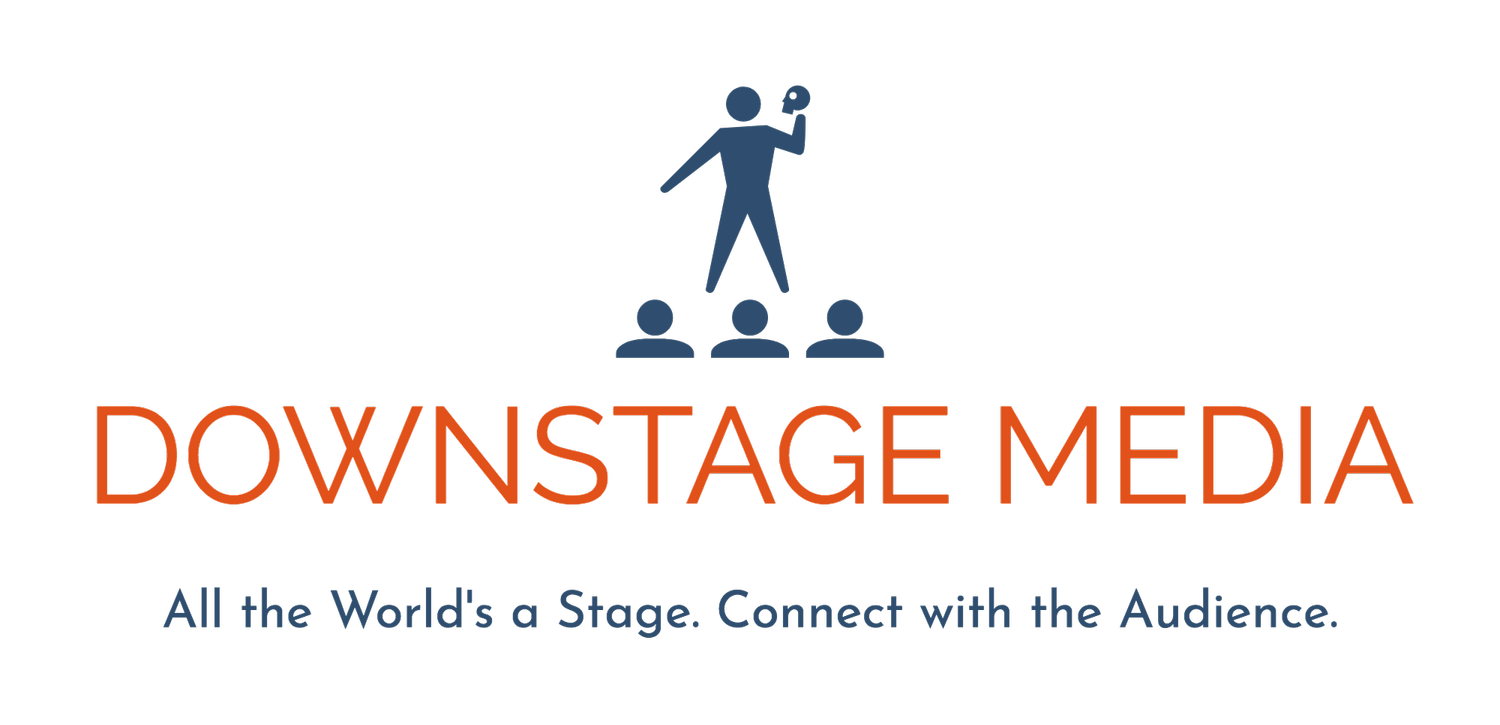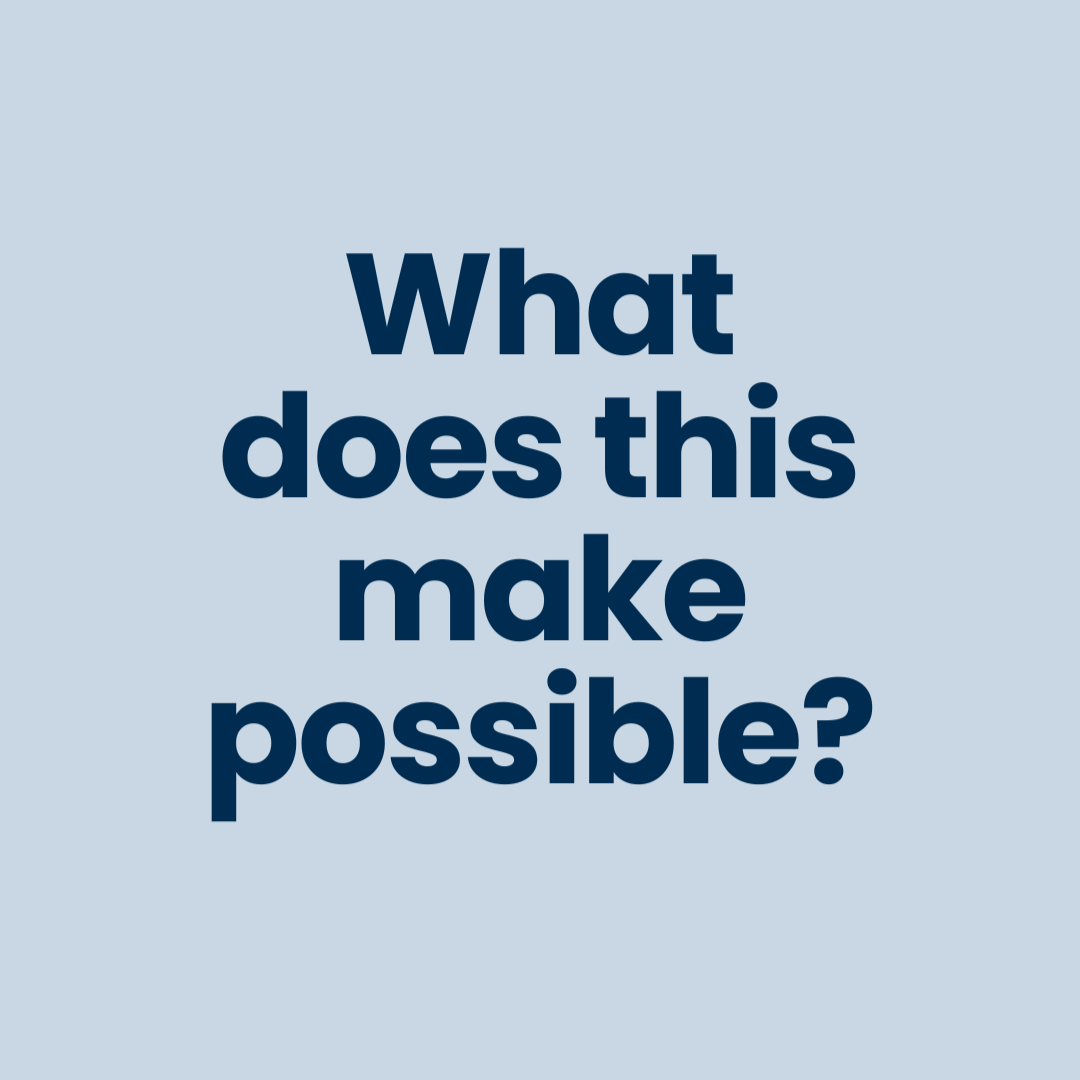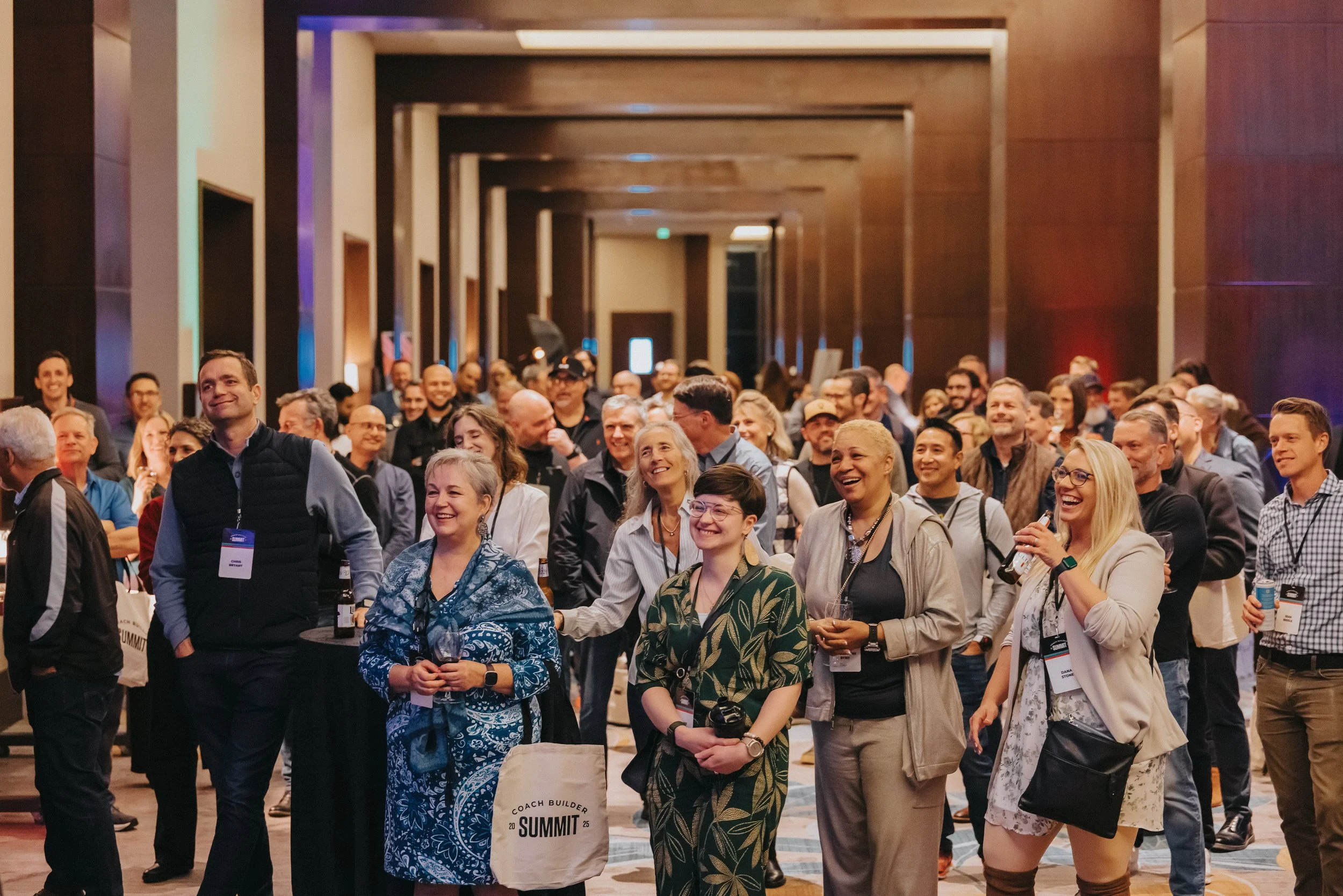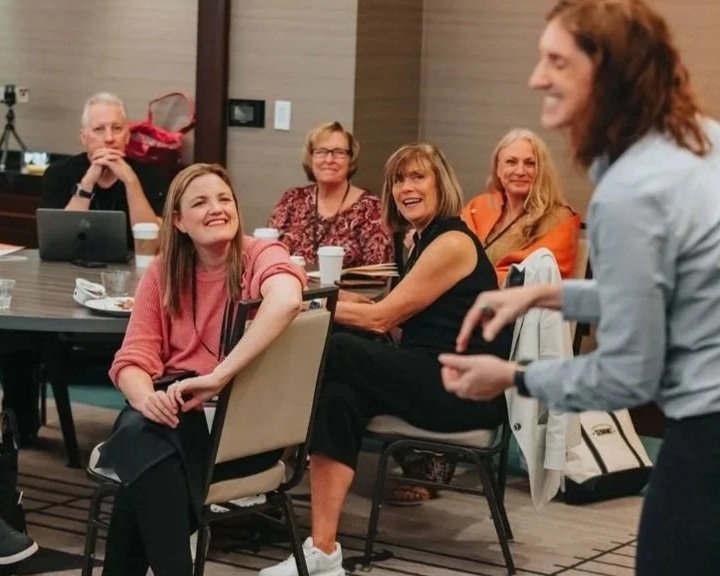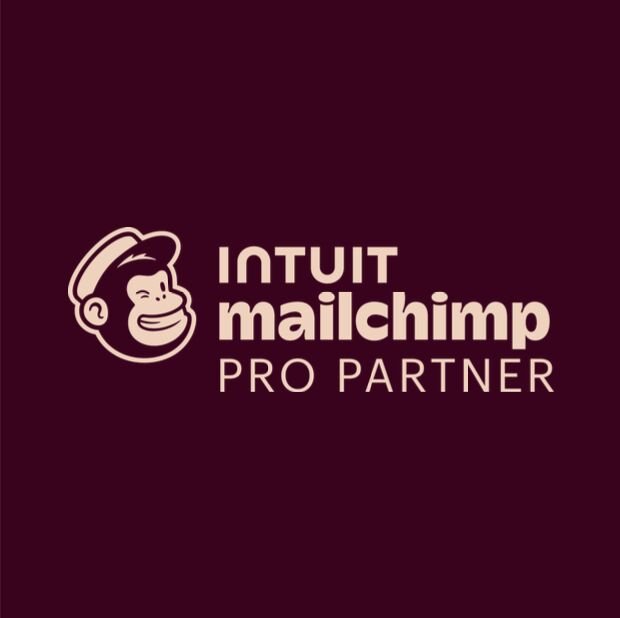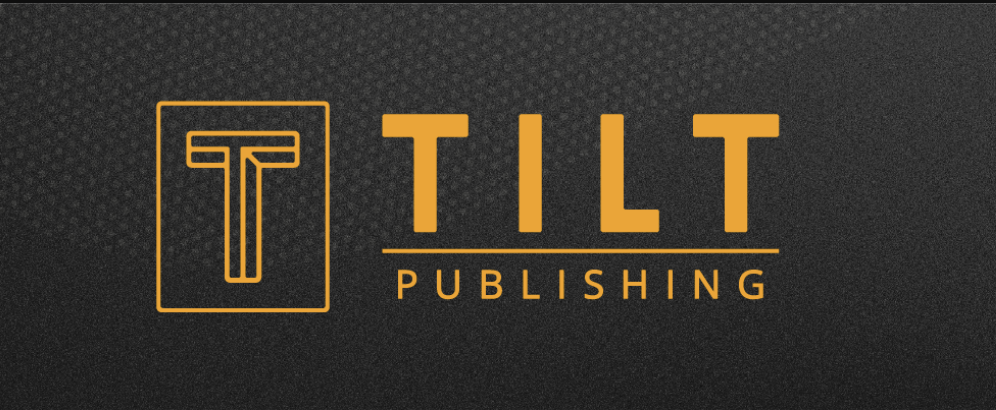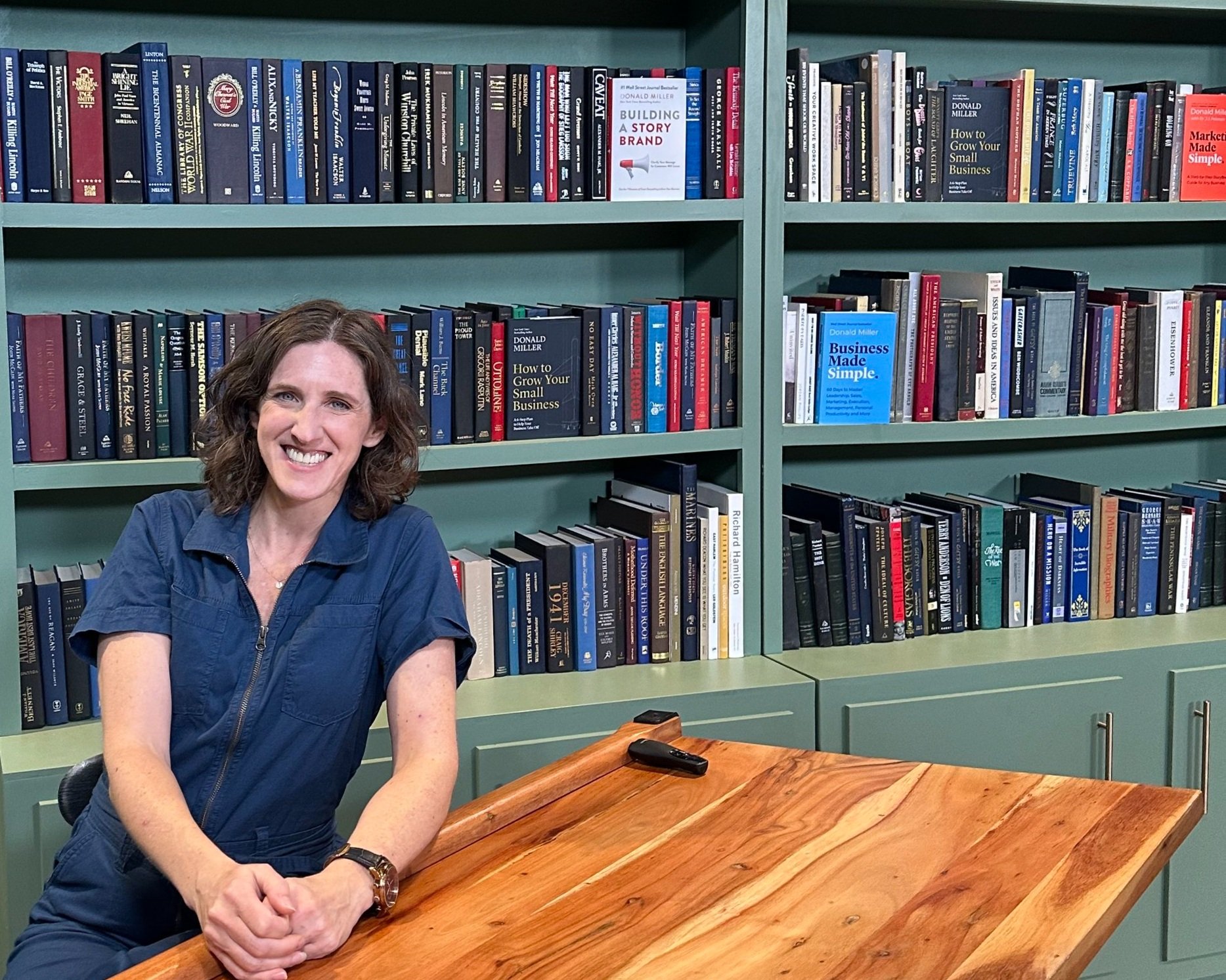What Does This Make Possible? The Question That Keeps Thought Leaders Profitable
You walk off stage inspired. You’ve just delivered your talk, met amazing people, collected swag and stories—and now what? This post shows how one question can help you turn every stage, idea, and opportunity into something measurable: What does this make possible?
It Takes More Than Brilliant Ideas to Make Thought Leadership Work
Stop Treating Inspiration Like Strategy
Creativity Starts With Seeing Things Differently
Strategy is Just Creativity With Structure
Movement Over Mastery
Proactive Beats Perfect
When You Ask What Does This Make Possible You Lead With Intention
Build the Visibility System Every Thought Leader Needs
I first heard the question “What does this make possible?” from Donald Miller. It’s shaped how I approach every project and challenge ever since.
When you’re the face of a business — whether as a speaker, founder, or thought leader — you live in moments of momentum.
The problem is, momentum fades fast.
You go to the event. You shake hands. You feel that spark. But by the time you’re back at your desk, you’re trying to get caught up from the stuff you missed when you were out of town at the conference, and the energy’s gone.
I get it. I’ve been there too.
That’s why I started asking one question that’s shifted the paradigm on how I think about conferences and events:
What does this make possible?
Because here’s the deal: if you don’t ask it, opportunities disappear.
If you do ask it, you can make events, conferences, or conversations pay for themselves.
Stop Treating Inspiration Like Strategy
The post-conference high is real. Without a plan, though, it fades fast. Photo by Parker Young Photography at the 2025 Coach Builder Summit.
Attending or speaking at an event is an investment of both time and money (and, introverts say energy. As a textbook extrovert I can’t possibly understand how being around hundreds of people for hours on end days at a time can be draining, but I digress…)
There are costs with hotels, flights, and buying contact lens solution at the CVS close to the hotel because you forgot it again.
According to a recent studied reported on by Harvard Business Review, events account for upwards of 21% of a company’s marketing budget, but “most companies plan and execute events without specific business objectives.” (Cespedes and Prasad, Get More from Your Event Spending).
When you don’t pause to ask “What does this make possible?” that investment quietly turns into an expense.
Asking the question doesn’t mean you have to change everything. It means you start noticing the possibilities instead of reacting to them.
That’s how you stay proactive instead of scrambling after what everyone else is doing.
Creativity Starts with Seeing Things Differently
As a professional improviser for over fifteen years, I made a living looking at simple situations from new angles in seconds. Now, it helps me in client meetings because I can come up with a few different scenarios at lightning-quick speed.
That kind of creativity on demand is a skill that can be strengthened.
During a live session, recently I held up a pen and asked the room, “What is this?”
Someone said, “A weapon.” (she said she was from Colombia, and you never know when you have to be ready to protect your home. Respect to that queen.).
Another said, “A hair stick.” Another, “A tracheotomy tool.” And another, a percussion instrument.
Creativity isn’t luck, it’s practice. During a live session, Annie Figenshu demonstrates how reframing a simple object can open up your brain to new possibilities. Photo by Parker Young Photography.
Same object. Five uses.
Malcolm Gladwell talking about this improv skill in his book Blink: The Power of Thinking Without Thinking.
“In life, most of us are highly skilled at suppressing action. All the improvisation teacher has to do is to reverse this skill and he creates very ‘gifted’ improvisers. Bad improvisers block action, often with a high degree of skill. Good improvisers develop action.”
― Malcolm Gladwell, Blink: The Power of Thinking Without Thinking
That’s creativity in action. And it’s how you can look at the options that an event gives you with your content.
Spoke on a panel? Sure, that’s a speaking gig and it’s exposure. But what else could it be?
A story for your next newsletter
A 60-second clip for LinkedIn
A new topic for next year’s talk
Psychologists actually use this kind of exercise as a standard creativity test called the Alternative Uses Task. In one version, you give people an everyday object and see how many different uses they can generate for it in a short amount of time. The goal isn’t the “right” answer. It’s how many angles you can see.
That’s what you do every time you turn a story into a keynote, a keynote into a podcast episode, or a podcast into a LinkedIn post. Same idea, new channels.
You don’t have to do all of it. You just have to take the time to think about what’s possible.
Strategy Is Just Creativity With Structure
Once you’ve stretched your brain, bring it back to what actually moves the business.
Ask: What’s the ROI of this moment?
That doesn’t make you transactional. It makes you intentional.
Take what you already have and consider turning it into something that works:
The freebie you picked up at a conference could become a client gift
A new framework you learned could become a breakout session or follow-up workshop.
One of my favorite moments from that same event came from a Marine veteran talking about challenge coins—tokens exchanged in the military as signs of loyalty and achievement.
My cousin in the Marine Corps, Marty Kazanjian, shared these challenge coins with me. In the military, they mark loyalty, progress, and pride. In business, they’re a powerful reminder that a client’s work matters. They could be an option as atangible milestone to keep clients engaged and connected.
It hit me: that could be a retention strategy. What if you did that to honor the work you do with your clients? What if every time someone finished a project, they got something tangible. Like a marker of progress and pride?
Again, you may not necessary implement it, but taking the time to turn the idea over in your mind and consider whether or not it’s worth implementing and works in your strategy helps you take a proactive approach to your business.
That’s what “What does this make possible?” looks like in action.
Movement Matters More Than Mastery
Here’s where people stall: they get an idea from an event, decide to build out the assets for it, and then wait until those assets are fully done.
Don’t.
“Momentum only matters if you do something with it.”
Because then life happens and it may take you weeks to finish.
Instead, do one small thing today that keeps the energy moving.
Text a client who came to mind during your last event.
Send a thank-you email to a new contact.
Film a 60-second recap video while the memory’s fresh.
Momentum compounds when you keep it going. So don’t sit down and stop once you get to your desk.
When you’re the face of a business, the fastest way to build trust isn’t through perfection. It’s through consistent motion.
Proactive Beats Perfect
You don’t have to adopt every idea you come across. You don’t even have to adopt any of them.
But when you take the time to consider what something might make possible, you shift into a proactive mindset.
“You don’t have to do it all. You just have to see what’s possible.”
You stop being tossed around by every trend and start making deliberate choices about what belongs in your business and what doesn’t.
That’s the difference between feeling behind and feeling in control.
You can decide, “This is worth my time,” or “That’s interesting, but not for me right now.” Both are wins. Because you made the call.
When you Ask What Does This Make Possibile You Lead with Intention
If you start asking “What does this make possible?” after every stage, project, or opportunity, you’ll notice a shift:
During the session, we practiced seeing everyday objects in new ways. Creativity opens the door to strategy, and strategy opens the door to possibility.
talks turns into stories.
ideas turn into content.
moments turn into measurable ROI.
You’ll stop leaving events inspired but unsure—and start feeling confident that you can capitalize on what you’ve learned.
Because the truth is, the mic won’t always be handed to you.
Sometimes you’ll have to take the stage.
And when you do, the question to ask isn’t “What’s next?” Instead, it’s “What does this make possible?”
Build the Visibility System Every Thought Leader Needs
If you want a simple, repeatable way to turn your ideas, keynotes, and interviews into content that keeps you visible between gigs, the Spotlight Strategy 1-Day is the fastest way to get there.
Book a Call so we can walk through whether the Spotlight Strategy 1-Day is the right fit — a focused intensive with seven days of support to help you put your first round of content into motion.
Let’s get you organized, visible, and moving forward with clarity.
